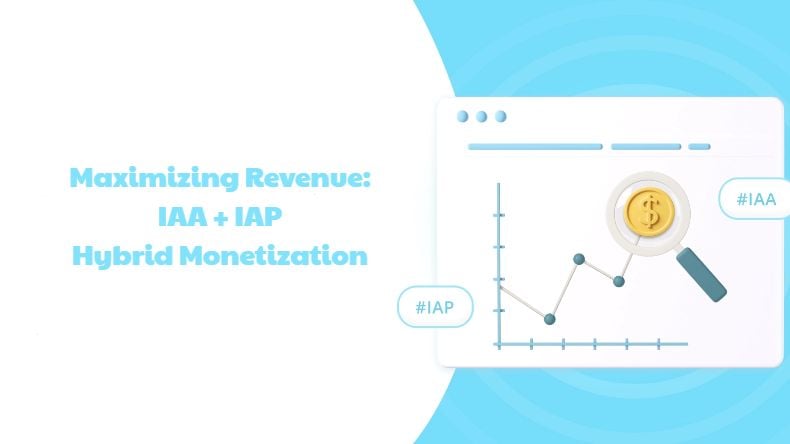
Maximizing Revenue: The Strategic Power of IAA + IAP Hybrid Monetization
In the competitive landscape of mobile apps, relying solely on in-app advertising (IAA) or in-app purchases (IAP) limits revenue potential. The future belongs to hybrid monetization – a dynamic fusion of both models that unlocks sustainable growth.

Here's why and how to implement it:
1. The Synergy Effect
-
IAA monetizes non-paying users through rewarded videos, interstitials, and banners.
-
IAP captures high-value users via subscriptions, virtual goods, or premium features.
Combined, they cover 100% of your user base, turning ad-avoiders into paying customers while extracting value from ad-tolerant users.
2. Data-Driven User Segmentation
Leverage analytics to classify users into tiers:
-
Whales: Target with exclusive IAP offers.
-
Engaged Mid-Tier: Offer "remove ads" IAP + strategic rewarded videos.
-
Casual Users: Optimize non-intrusive ad formats (e.g., opt-in rewarded ads).
3. Balancing UX & Revenue
-
Rewarded Ads = Win-Win: Users gain currency/lives; developers earn ad revenue.
-
IAP Gateways: Offer ad removal packs ($1.99) after showing 2-3 rewarded ads, converting ad-engaged users into buyers.
-
Avoid: Forced ads that trigger uninstalls.
4. Case Study: Hyper-Casual Games
Puzzle Game Results (2024):
-
Pure IAA: $0.08 ARPDAU
-
Hybrid Model: $0.21 ARPDAU (+162%)
-
Key Tactic: Offered "500 coins + skip level" for watching a rewarded video → 23% converted to IAP later.
5. Implementation Checklist
✔ Use mediation platforms (e.g., AdMob, AppLovin) to optimize ad fill rates.
✔ A/B test IAP pricing + ad frequency per user segment.
✔ Track LTV (Lifetime Value) cohorts for 90 days to validate hybrid efficiency.
The Bottom Line
Hybrid isn't just additive – it's multiplicative. By tailoring monetization to user behavior, you maximize revenue while preserving retention. Start small: Integrate rewarded ads into existing IAP flows and measure the uplift!
You May Like
15 Websites to Advertise Your Business for Maximum Impact
With countless options available, selecting the most effective websites for advertising can be daunting. Here a list of fifteen websites where you can advertise your business, each offering unique features and benefits to enhance your marketing strategy.
Global Ad Platforms in a Battle Royale: Where to Allocate Your Ad Budget?
In the wave of digital marketing, online advertising has become a key means for enterprises to promote their products and services. In the face of many globally recognized advertising platforms, how to reasonably select and allocate advertising budgets has become an urgent problem for many business owners and marketers.
How to Optimize Search Ads
As the world's largest search engine, Google has a huge user base and precise search algorithms. Through Google promotion, foreign trade companies can formulate precise keyword strategies based on their own products and target markets to achieve precise delivery of advertising information.
Beyond CTR & CPC: The Underrated SEM Metrics You Should Be Tracking
While click-through rate (CTR) and cost-per-click (CPC) remain dashboard staples for many search marketers, an over-reliance on these surface-level metrics creates dangerous blind spots. To optimize for meaningful business outcomes, shift your gaze toward these underutilized yet powerful indicators: